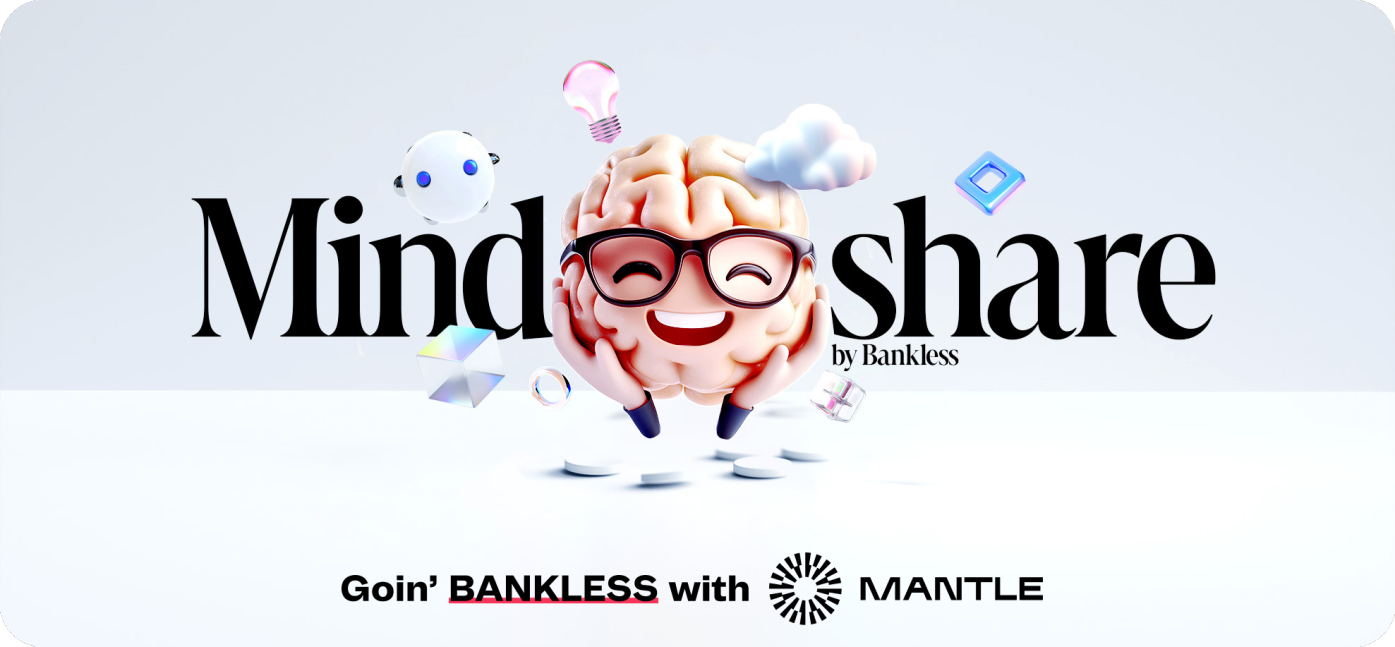The Rise of Vibe Coding


View in Browser
Sponsor: Mantle — Mantle is building the largest sustainable hub for onchain finance

📸 Market Snapshot: While the AI agent sector kept dragging amid broader tariff tensions, Bittensor’s subnet tokens broke away from the pack—many posted triple-digit gains this week even as $TAO itself slipped ~10%.
The market’s clearly shifting toward deeper subnet speculation, fueled by a series of factors. These foundations include:
- Subnet market dynamics are maturing: Bittensor ecosystem researcher @0xWash identifies three waves so far: initial hype in February on the dTAO launch, a shakeout in March, and now a third phase driven by actual products, partnerships, and deeper liquidity. Investors are starting to separate signal from noise. (h/t Tao Times).
- TaoFi going live: With dTAO in motion, entirely new markets are forming with new infrastructure like TaoFi going live. Through Hyperlane, $USDC can now be bridged to Bittensor EVM as $taoUSD, swapped for $sTAO, or used to LP. While early, DeFi like this could draw bigger capital flows to subnets, deepening their liquidity and helping them grow even more.
- Pre-Conference Hype: With Bittensor’s first large-scale conference, Endgame, now just around the corner, the recent rally in ecosystem tokens may be fueled by excitement for the event and potential announcements there. It’s not uncommon for tokens to rally into big conferences, and while $TAO may be being left out for now, momentum could shift in its favor soon.
| Token prices as of 3pm ET | 24hr | 7d |

|
VIRTUALS $0.45 | ↗ 0.1% | ↘ 16.1% |

|
AI16Z $0.14 | ↘ 8.5% | ↘ 19.6% |

|
ARC $0.04 | ↗ 12.9% | ↘ 13.1% |

The internet just got Ghiblified—and the AI world may never be the same.
OpenAI’s dreamy new image model has flooded feeds with Studio Ghibli vibes, rocketing the company to 1 million new users in just the first hour after the model's release.
In this episode, David and Ejaaz break down how OpenAI stole the spotlight, why CoreWeave’s IPO signals an AI infrastructure boom, and what Elon’s xAI acquisition of X means for the future of context-aware agents.
Plus, Google quietly dropped a model that might be the best yet (though few noticed), and Cursor raised $625M to usher in the era of “vibe coding” and Model Context Protocols.
Don’t miss the breakdown. Watch the full episode now! 👇

As AI drives the cost of producing content to nearly zero, it’s now doing the same for software—ushering in what ex-Tesla AI director and OpenAI founding member Andrej Karpathy calls “vibe coding.”
The idea is simple: use AI tools like Claude, Cursor, or Replit to quickly whip up a project, refine it just enough, and ship it. That means:
- Less busywork: AI handles repetitive tasks.
- Fast shipping: Minimal time on perfection.
- Easy pivots: Quickly abandon what doesn’t click.
The phenomenon caught on fast. Over 25% of YC’s Winter 2025 startups said AI wrote nearly all their code.

While clearly a technical shift, vibe coding with AI is equally a cultural one, shifting software from something precious and demanding months of careful crafting to an experience of speed, experimentation, and iteration. Its scrappiness fits well with crypto, a space that turns on remix, rapid creation, and building in public.
All this gives way to a world where software is spun up as quickly as content, goes viral as quickly as content, and is made all the more engaging by (hopefully) unique financial features.

Software as Content, Crypto as the Canvas
If vibe coding makes software feel like content—quick, creative, shared—crypto is the perfect place to publish it.
This line of thinking builds on a recent conversation with Dan Romero and Ted of Farcaster. Our space thrives on open-source norms, visible smart contracts, and forkable protocols. You can tweak a frontend, attach a token, and launch in hours. It’s not without risks (rushed contracts can lead to costly exploits), but the synergy is obvious:
- AI training data: Provides AI tools a good foundation of training data to learn from, which is part of what makes vibe coding even possible.
- Social & financial playground: Establishes a social, financial, and technical playground where ideas are quickly shared, reshaped, and turned into something new, perfectly matching the vibe coding spirit.
It’s not a coincidence that crypto’s most popular and engaging apps are simple and social. Apps like friend.tech (rip), Crypto the Game, and Yapster—even memecoins—all thrive on community buzz, making speculation fun, and moving quickly through cultural cycles.
Yes, these apps weren’t vibe coded, but they prove that crypto and its financial toolkit stand primed to mesh with the kind of quick, expressive software that vibe coding enables.
A prime example is Farcaster, a decentralized social protocol that embeds Mini Apps (previously Frames) into its feed. Devs there release token drops, diaries, or trading games in days, often just for fun. As a result, it’s become a hub for vibe coding.
You have channels like /vibecoding, which offers a great how-to guide, or /vibes, which ran a “7 days of vibe coding” event recently. Additionally, with its recent rebrand of Frames to Mini Apps, Farcaster also announced that their developer docs are now LLM-friendly, making them easier to spin up with AI tools.
the simplest bull case for farcaster is that we’ll need an app-native feed as software becomes content, vibecoding becomes the new posting, and the number of applications being released 1000x's
— Josh Cornelius (@joshcrnls) April 3, 2025
And it’s not just Farcaster. On Crypto Twitter, vibe coding is clearly surging:
- 0xDesigner made a mega thread where he vibe codes something new every day
- B3's buildathon is seeing devs vibe coding in an onchain games onchain games hackathon
- Tribute Labs hosts weekly chaos coding Zoom sessions to build and ship apps in an hour
Meanwhile, projects like Ohara on Base or Dev.fun and Alchemist AI (previously mentioned in Mindshare, once again) on Solana blend AI-powered app creation with tokens, showing how quickly vibe-coded ideas can become interactive experiences.
Cost of Software to Zero, So Where’s the Value?
We’ve seen a similar shift in music: once albums became basically free, the real money moved to live shows, exclusive access, merch drops, and brand deals—all the experiences around the music.
In short, the content still mattered, but the business moved to everything that couldn’t be easily copied or streamed.
Now, as code becomes cheap, the “value” shifts to the experience around the app, created and fueled by tokens, speculation, exclusivity, and social hype.
NFTs are turning into a superior form of entertainment.
— Aaron Wright (@awrigh01) June 16, 2022
Better than Netflix, better than some games, better than fantasy sports.
Digging in here, consider things like...
- Speculating on tokens: Tracking a token’s price becomes entertainment in itself. Whole communities do, and will continue to, form around chart-watching and meme-fueled runs.
- Exclusive access: Like backstage passes, devs can issue NFTs for early access, private chats, or premium features, queue Crypto the Game or Freysa, etc.
- Hype as the product: Sometimes the hype is the product. A new Mini App drops, and suddenly the timeline lights up with people using it, remixing it, and guessing whether it’ll take off. See Pump.fun and all its clones.
Music data underscores this: By 2017, top artists were earning ~80% of their income from touring, while only ~15% came from recorded music. And the trend hasn’t slowed down. Global revenue from live tours continues to hit new highs, showing that when the content becomes free, value lives in experiences.
The Path Ahead
Put this all together, and you get a pretty clear picture: software is getting cheaper and faster to build, and crypto gives it built-in incentives and social reach, while open-source development is pouring gas on the fire.
Of course, this all comes with caveats. Vibe coding in crypto isn’t risk-free, especially when smart contracts are involved. And for many builders, AI still struggles with blockchain-specific code. As 0xDesigner joked, “If you’re in infra, pivot to vibe code infra ... you’ll make a killing from me alone.”

Yet, in the wake of DeepSeek, and as more major tech companies open-source models and software, it becomes even easier to remix, rework, and republish software—i.e. vibe code.
That means more tools, more codebases, more learning material—all of which shortens the distance between having an idea and launching something new. It’s not hard to imagine a world where spinning up an app is as simple as making a meme. In many ways, we’re already there.
Crypto fits into this perfectly, imbuing software with the financial and cultural energy that turns an idea into a living, breathing experience. Tokens, NFTs, loyalty points—they’re not just features, they’re ways of making software and its experience social, valuable, and fun.
And when you combine the two—cheap, fast code with crypto’s built-in speculation machine—you get an environment primed for casual, expressive, internet-native experiments to thrive. The apps don’t need to be perfect. They just need to be interesting, social, and alive.
Plus, other news this week...
🤖 AI Crypto
- Alchemist AI is now available on Google Play
- Ambient raised $7.2M to build a Solana-compatible AI chain powered by Proof of Work
- Endgame, a Bittensor summit and hackathon, kicked off a series of Twitter spaces ahead of their upcoming conference later this month
- Gensyn unveiled its machine learning testnet
- OpenServ opened signups for its Builder's Playground
- Wayfinder published its Q1 2025 recap
📣 General News
- ChatGPT users generated 700M images since last week and Plus tier is now free for college students in the US and Canada through May
- OpenAI raised $40B and shared plans to release O3 and O4-mini in the coming weeks, with GPT-5 now expected in a few months
- Runway released its latest video-generating model
- Therabot, an AI therapy app, showed gold-standard results in trials, with a 51% drop in depression and 31% in anxiety symptoms
- Wikimedia is seeing a bandwidth demand surge from AI crawlers
- xAI acquired X
📚 Reads
- AI 2027 — Daniel Kokotajlo et al.
- Good Crypto x AI Projects — Daniel Barabander
- Grok's Million Dollar Moment — mleejr

Experience the next generation of onchain finance with Mantle—where blockchain meets everyday banking. Powered by a $4B treasury, Mantle Network, and mETH Protocol, Mantle is launching three innovation pillars:
- Enhanced Index Fund for optimized crypto exposure
- Mantle Banking for blockchain-powered banking
- MantleX for AI-driven innovation